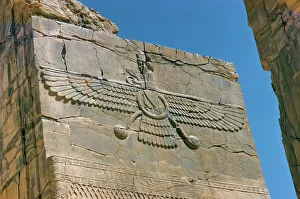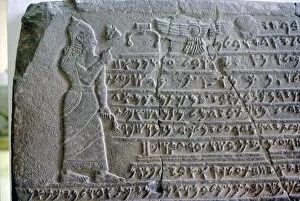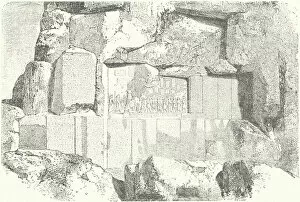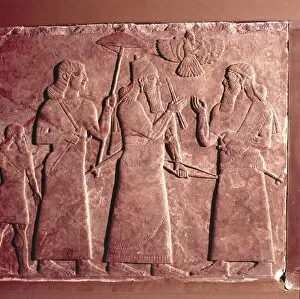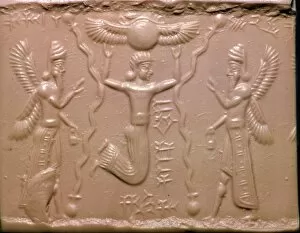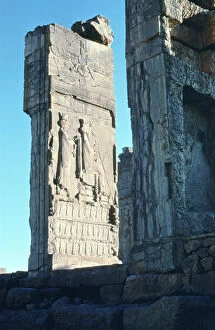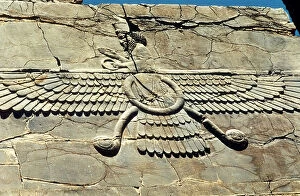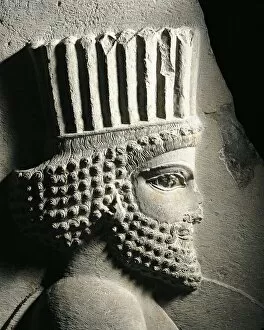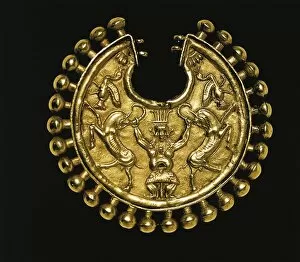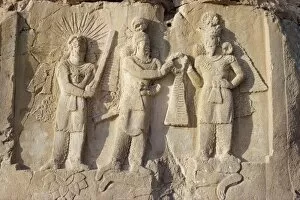Ahura Mazda Collection
Ahura Mazda, the ancient deity worshipped by the Persians, is depicted in various forms of art and inscriptions throughout history
For sale as Licensed Images
Choose your image, Select your licence and Download the media
Ahura Mazda, the ancient deity worshipped by the Persians, is depicted in various forms of art and inscriptions throughout history. From cuneiform tablets to multilingual rock inscriptions at Mount Behistun, Ahura Mazda's presence is undeniable. Assyrian art showcases colorful lithographs depicting this revered god. In one notable scene, we witness the investiture of Ardashir I as he receives the Kingship ring from Ahura Mazda himself. This momentous event is captured in an Assyrian relief dating back to the 9th century BC. The Neo-Assyrian cylinder-seal impression further emphasizes Ahura Mazda's significance as it portrays his divine power and influence. Moving forward in time, a stone relief from Persepolis reveals a doorway leading to the Hall of 100 Columns where Ahura Mazda stands tall amidst intricate carvings. Persepolis continues to be a testament to Persian culture with another depiction adorning its walls around 500 BC. A fragment of relief featuring a Persian guard serves as evidence of their devotion towards this god. Even beyond reliefs and engravings, precious artifacts like an agate cylinder seal belonging to Darius I depict him hunting lions from his chariot while accompanied by none other than Ahura Mazda himself. The Achaemenid civilization also left behind exquisite gold earrings adorned with reliefs showcasing this divine figure. These masterpieces date back between the 6th and 4th centuries BC. Throughout history, whether through monumental architecture or delicate jewelry pieces, artists have sought to immortalize Ahura Mazda's importance within Persian society. His presence resonates across time and cultures - a testament to his enduring legacy as both protector and creator for those who believed in him.

